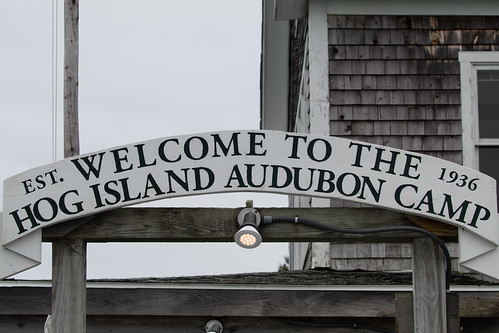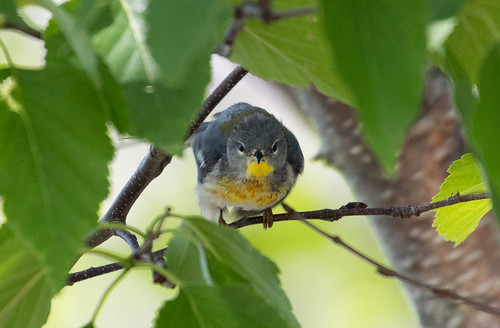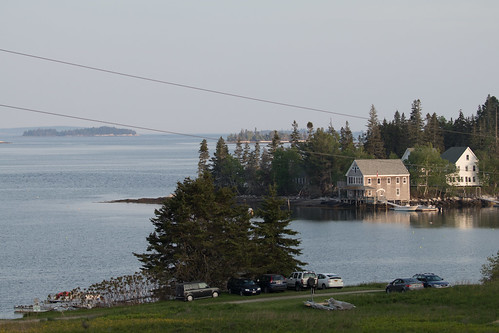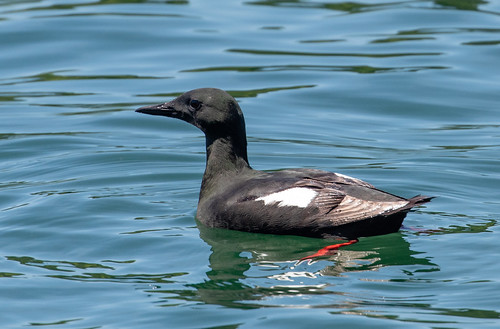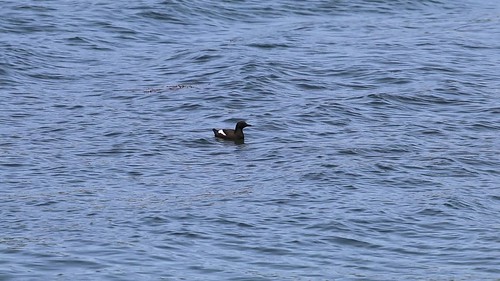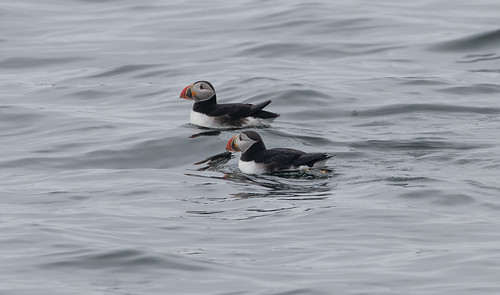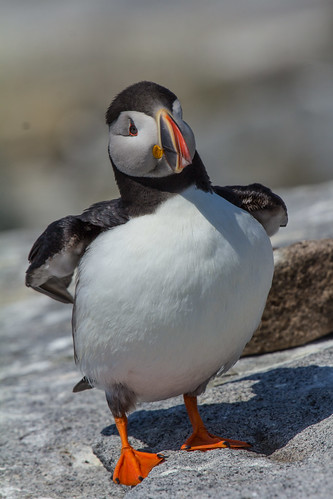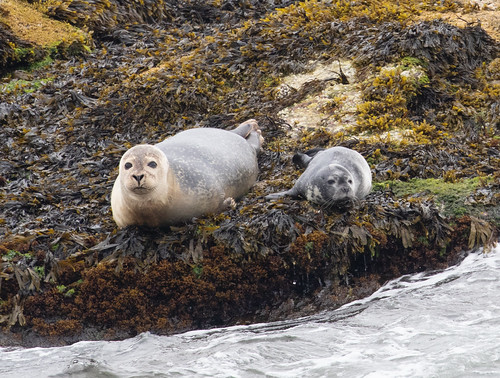I spent last week in Maine, mostly on Hog Island, a small coastal island owned by National Audubon. I was one of the instructors for Audubon’s Joy of Birding camp. I’d been at the same event two years ago, so it was both fun and interesting to see how things stayed the same and how they’ve changed. The apple trees weren’t blooming this year, but the Northern Parulas were still feeding on caterpillars in the trees, as well as singing up a storm.
The sounds of Hog Island are quite a bit like those you’d hear in northern Wisconsin and Minnesota—warblers, thrushes, chickadees, and other birds of the North Woods. And the Maine countryside looks a lot like the north woods, too. Hog island’s latitude is at 43.9° N while Duluth’s is 46.7° N.
The island looks pretty much like any of the little islands within the Boundary Waters, but when you look out on the water, instead of Mallards you see Common Eiders, and instead of loons you see tiny relatives of puffins called Black Guillemots.
The water doesn’t look any different from Lake Superior, but if you look down into it from the dock at Hog Island, you very well may see jellyfish, and unlike docks on Lake Superior, the water end of the dock at Hog Island keeps shifting up and down with the tide. At high tide I could walk to my cabin thinking how much like Lake Superior the shore looked; a few hours later the edge of the water would be way out, the shoreline covered with mats of kelp and other salty plant life.
I’ve not seen a single puffin from Hog Island, but each year the class takes a boat ride out to Eastern Egg Rock, barely further north at 43.8° N, to see the Atlantic Puffins that now nest there. Puffins once nested on several of these islands until people wiped them out in the 1800s. They’d entirely disappeared from Eastern Egg Rock by 1880. In 1973, biologists took young puffins, about 10-14 days old, from Newfoundland, and set them in artificial sod burrows on Eastern Egg Rock. They placed handfuls of vitamin-fortified fish in these burrows each day. When the birds reached the age of fledging, they took off for the sea, and the biologists kept hope that when they reached adulthood, they’d return to this island.
To encourage them, graduate student Steve Kress devised a plan to set up wooden puffin decoys so the island would look like a good spot to stay and nest. Puffins started returning to Eastern Egg Rock in 1977, and four pairs nested there in 1981. Now 150 pairs nest there. We got to see quite a few of them on our boat ride around the island, along with countless Black Guillemots.
My group also saw single members each of the other two alcids possible to see in June in Maine—a Razorbill and a Common Murre.
The furthest south that puffins have nested continuously without human intervention is on Machias Seal Island, a border island with a Canadian Coast Guard station whose ownership the US disputes. Razorbills and murres nest on Machias Seal Island along with 1500 pairs of puffins. That island is at 44.3° N—still not as far north as Duluth’s 46.7° N. I love visiting Machias Seal Island—if water conditions allow a landing, we can get right into blinds to observe them up close and personal—but that isn't part of the Joy of Birding Class and wasn't in the cards for my Maine trip this year.
My time at this Joy of Birding class was an amazing blend of feeling right at home and feeling like I was in an exotic paradise. Boat noises made recording puffins impossible, but I did make a sound recording of the dawn chorus on Hog Island on a perfect day—no wind whatsoever, just the gentle lapping of the Atlantic a constant in the background. That’s a lovely sound, which will transport me back whenever I listen. You can listen to it here.
